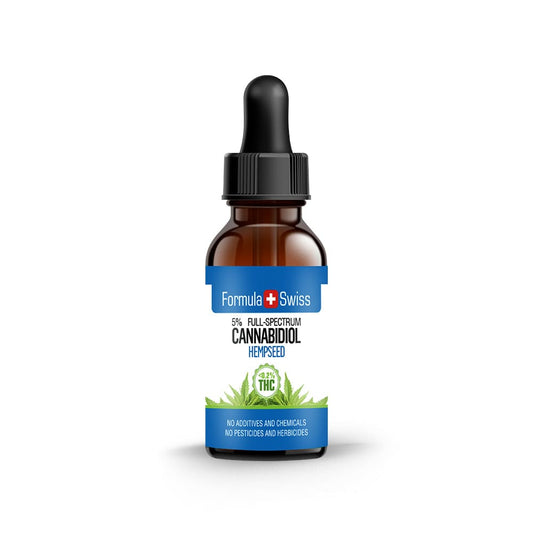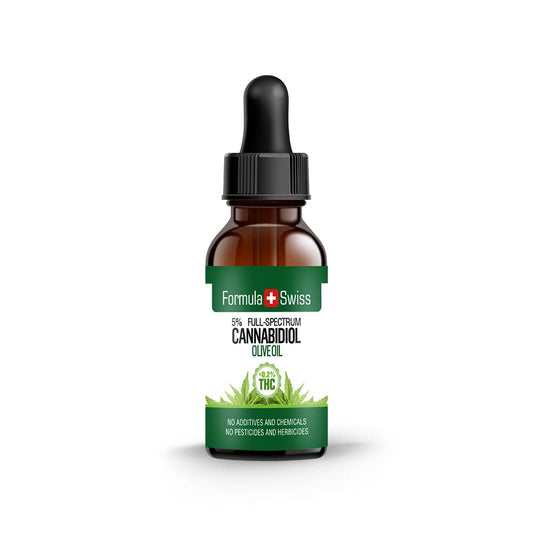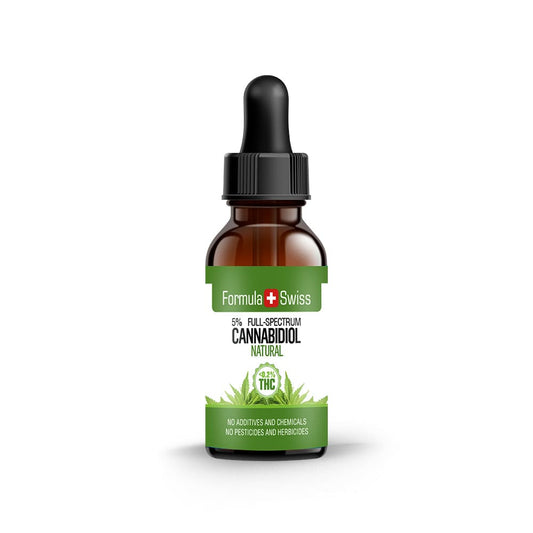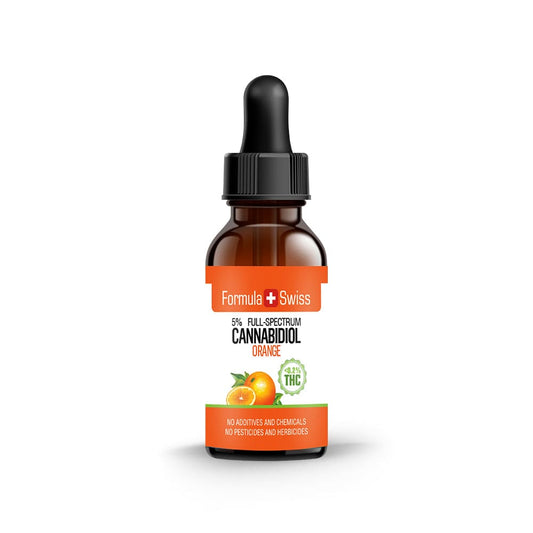THC-O-Acetate—usually just called THC-O—is one of those cannabinoids that’s been popping up more and more lately. It’s not like CBD or delta-9 THC, which occur naturally in the plant. THC-O is actually made through a process called acetylation, where hemp-derived THC is chemically altered.
A recent study in the journal Cannabis describes THC-O as a semi-synthetic cannabinoid created in the lab—and honestly, it’s one that really stands out. The fact that it’s still relatively new and not heavily regulated yet makes it a bit of a wildcard.
After spending more than a decade working with CBD and hemp, I’ve seen the industry evolve fast. Some of these new developments are exciting. Others raise eyebrows. THC-O manages to do both at the same time.
What sets it apart is the chemical tweak it goes through. Adding an acetate group to the THC molecule changes how the compound behaves. That one modification creates effects that can catch people off guard, especially if they’re expecting something closer to traditional THC or CBD.
This small change has sparked some big conversations—in labs, in boardrooms, and among people just trying to figure out what this new cannabinoid actually means.
In this article, I want to dig into what THC-O really is, how it’s made, and why it’s suddenly getting so much buzz.
Save up to 30% when you order your CBD oil today
Key takeaways
- THC-O-Acetate (THC-O) represents a synthetic cannabinoid distinguished by its potent psychoactive substances.
- The creation of THC-O necessitates a chemical modification process that heightens its strength compared to Delta-9 THC.
- Due to the enhanced potency, the effects of THC-O can be significantly more pronounced than those found in natural cannabis.
- THC-O falls into the class of research chemicals and synthetic cannabinoids, garnering attention for its potential uses and impacts.
- A comprehensive understanding of THC-O is vital given its unique properties and growing prevalence in cannabinoid research and usage.
This article is provided for informational purposes only and does not relate to any of the products available in our webshop. For more information, please see our full disclaimer.
Introduction to THC-O-Acetate
THC-O-Acetate is a synthetic cannabinoid that has gained attention for its distinct chemical profile. Unlike naturally occurring cannabinoids found in the cannabis plant, THC-O-Acetate is produced through laboratory synthesis. It is designed to interact with the body’s cannabinoid receptors, though its behaviour is still being studied.

Its synthetic nature raises important questions, particularly around safety, consistency, and how it compares to naturally occurring compounds.
For those studying or working with cannabinoids, THC-O-Acetate presents a unique opportunity to investigate the boundaries of cannabinoid chemistry and how different structures may influence interaction and effect.
| Characteristic | Natural cannabinoids | Synthetic cannabinoids (THC-O-Acetate) |
|---|---|---|
| Source | Derived directly from the cannabis plant | Lab-manufactured |
| Interaction with brain receptors | Primarily interacts with CB1 and CB2 | Designed to mimic interaction with CB1 and CB2 |
| Psychoactive spectrum | Limited to naturally occurring levels | Potentially enhanced potency and effects |
THC-O-Acetate and synthetic cannabinoids offer a unique view on their impact. It's crucial to keep learning about them. This helps us understand their effects on users and society.
Synthetic vs natural cannabinoids
Chemistry behind THC-O-Acetate
THC-O-Acetate is a key area in cannabinoid chemistry. It's made through a process called acetylation of THC. This shows how small changes in chemistry can greatly affect how cannabinoids work in our bodies.
To make THC-O-Acetate, THC is mixed with acetic anhydride. This makes the molecule more lipophilic and better at getting past the blood-brain barrier. These changes might explain why THC-O-Acetate could be more potent than regular cannabinoids.
| Aspect | THC-O-Acetate | Delta-9 THC |
|---|---|---|
| Chemical formula | C23H34O3 | C21H30O2 |
| Solubility in lipids | High | Moderate |
| Effect on the blood-brain barrier | Enhanced penetration | Standard penetration |
| Potency | Potentially higher | Standard for cannabis |
Looking at THC-O-Acetate and delta-9 THC gives us a better understanding. Delta-9 THC is well-studied, but THC-O-Acetate might offer new uses. Its stronger and longer-lasting effects are areas that need more research.
Studying cannabinoid chemistry and how they're made helps us understand cannabis better. It's important to know how safe and effective these compounds are.

Order and get up to 30% off your CBD oil
Historical context of THC-O-Acetate
The story of THC-O-Acetate's development is fascinating. It shows the long journey of cannabinoid history and the hard work in psychoactive research. At first, it was less well-known than CBD and THC. But now, it's gaining attention, showing the complex world of cannabis science.
According to research published in the Journal of Analytical Toxicology, THC-O-Acetate has emerged as a compound of growing scientific and forensic interest. It is synthesised by chemically modifying THC using acetic anhydride, a process that enhances its potency and alters its effects.
This chemical transformation has drawn attention not only from researchers studying novel psychoactive substances but also from users seeking alternatives to traditional cannabinoids.
Its creation is tied to technological advancements and a growing understanding of cannabinoids. It wasn’t developed solely for recreational purposes, but also to discover broader applications. This reflects a shift in research towards identifying functional uses for cannabinoids.
THC-O-Acetate's rise is a sign of ongoing research and discovery in cannabinoids. The constant improvement in synthetic cannabinoids shows our never-ending quest to learn more about them.
Alternative cannabinoids
In the world of cannabis research, we're seeing more interest in alternative cannabinoids like THC-O-Acetate. It's important to understand the cannabinoid comparison. This helps users and researchers know the good and bad points of these compounds.
| Cannabinoid | Onset time | Duration of effects | Potency | Drawbacks |
|---|---|---|---|---|
| THC-O-Acetate | 30-60 min | Up to 6 hours | High | Limited research |
| Delta-9 THC | 15-30 min | 2-4 hours | Moderate | Psychoactive effects |
| CBD | 5-10 min | 2-3 hours | Low | Variability in effect |
THC-O-Acetate has alternatives like CBD and other THC analogues. Each interacts differently with our body's endocannabinoid system. Whether it's THC-O-Acetate's long-lasting effect or CBD's lack of psychoactive effects, each has a role.

For example, Delta-9 THC starts working faster but doesn't last as long as THC-O-Acetate. This might be better for some situations. The big challenge is teaching users about each cannabinoid's strengths and risks. This helps them make smart choices.
What are minor cannabinoids and why are they important?
THC-O-acetate vs delta-8 THC: What's the difference?
Understanding the differences between THC-O-Acetate and delta-8 THC is key. Both are THC variations, each with its own role in cannabis products.
According to a study published in the journal Drug and Alcohol Dependence, delta-8 THC produces effects similar to delta-9 THC but with reduced potency. It was shown to cause less anxiety, lower cognitive impairment, and fewer physical side effects, making it a milder alternative.
THC-O-Acetate, on the other hand, is a synthetic version of THC known for its strong effects. Made in labs, it offers a more intense experience. It's often chosen by those seeking potent results.
| Characteristic | THC-O-Acetate | Delta-8 THC |
|---|---|---|
| Potency | High | Moderate |
| Nature | Synthetic | Natural derivative |
| Psychoactive effects | Strong psychoactive effects | Clearer, less intense psychoactive effects |
| User preference | Preferred for potent experiences | Chosen for mild and less anxious experiences |
Knowing the differences between THC variations is crucial. It's not just about what you prefer. It's about understanding what each offers in terms of experiences and outcomes. Whether you prefer the intense effects of THC-O-Acetate or the clearer effects of delta-8, understanding these differences can greatly impact your journey with cannabinoids.
What is Delta-8 THC (Delta-8 Tetrahydrocannabinol)?
How THC-O-Acetate is used
Looking into the methods of utilisation of THC-O-Acetate is key to understanding its appeal and risks. As a potent synthetic cannabinoid, how it's used greatly affects the user's experience.
THC-O-Acetate is often found in oils, tinctures, and vapour products. These are popular for their ease of use and dosage control. Here's a detailed look at these common methods of utilisation:
| Method | Onset time | Duration of effects |
|---|---|---|
| Tinctures | 15-30 Minutes | 2-4 Hours |
| Vaping | 5-10 Minutes | 1-3 Hours |
Safety concerns and best practices
When it comes to usage safety of THC-O-Acetate, it's important to note the lack of research. This lack of research and regulatory oversight raises safety concerns. Here are some safety tips for usage:
- Start with a low dose to gauge tolerance if you're new to THC-O-Acetate.
- Be cautious about using THC-O-Acetate if you plan to operate vehicles or machinery. The psychoactive effects can severely impede your ability to perform such tasks safely.
- Always source products from reputable suppliers to avoid the risk of contamination with harmful substances.
By following these safety measures and understanding the various forms and methods of utilisation, individuals can better manage the risks associated with the use of THC-O-Acetate.

Order CBD oil now and save as much as 30%
Risks and safety concerns associated with THC-O-Acetate
THC-O-Acetate is a topic of interest and concern in the world of cannabinoids. It's important to look into its health risks and take safety steps. Since it's a research chemical, knowing the risks is key to keeping users safe.
Potential health risks
There are worries about the health risks of THC-O-Acetate. These include bad reactions from impurities or wrong doses. Without clear rules, users might get products that are not safe.
Also, we don't know much about THC-O-Acetate's long-term effects. More research is needed to understand its safety.

Safety precautions for users
Since we don't know much about THC-O-Acetate, being careful is important. Buy from trusted sources to be sure of what you're getting. If you have health issues, talk to a doctor before using it.
Don't mix THC-O-Acetate with other things. This can lead to bad reactions and health problems.
Here's a table that shows important safety tips for using THC-O-Acetate:
| Aspect | Safety concern | Precaution |
|---|---|---|
| Purity and concentration | Possible presence of harmful impurities | Source from verified, reputable suppliers |
| Medical conditions | Adverse reactions based on individual health | Consult with a healthcare professional |
| Mixing with other substances | Risk of harmful interactions | Avoid using concurrently with other chemical substances |
We want to help make using THC-O-Acetate safer. This means being careful and doing more research. As we learn more about synthetic cannabinoids, keeping users safe is crucial.
The future of THC-O-Acetate and synthetic cannabinoids
The study of synthetic cannabinoids, like THC-O-Acetate, is growing fast. Scientists are excited to look into how these compounds can help in medicine. They want to understand how synthetic cannabinoids can change the medical world.
Looking into THC-O-Acetate and other synthetic cannabinoids, we see their big potential. They could be key in future medical treatments. But, we need to understand their benefits and challenges well.
| Focus area | Expected advancements | Potential impact |
|---|---|---|
| Medical applications | Targeted research on specific ailments like chronic pain and epilepsy | Broadening the scope of treatable conditions |
| Safety and efficacy | Comprehensive clinical trials | Improved trust and acceptance among medical professionals |
Working together on rules and science is crucial for synthetic cannabinoids like THC-O-Acetate. These compounds could make treatments better and safer. But, we must be careful and watch them closely to use their benefits right.
Personal perspective
THC-O-Acetate is one of those compounds that really highlights how quickly cannabinoid development is moving. Working closely with CBD and hemp over the years, I’ve seen the space shift in unexpected ways—new cannabinoids appear, conversations evolve, and innovation continues to push boundaries.
THC-O stands out not just for how it’s made, but for the level of curiosity and debate it’s sparked among professionals and enthusiasts alike.
Most of my focus has been on naturally occurring cannabinoids, so watching something semi-synthetic like THC-O gain attention is a reminder of how diverse this field has become.
It encourages a thoughtful, informed approach—one that’s open to new ideas but grounded in a clear understanding of where these compounds come from and how they’re developed. That context is essential as we try to make sense of their place in the broader cannabinoid world.
Don’t miss out—save up to 30% when you purchase CBD oil today
Frequently asked questions
What is THC-O-Acetate (THC-O)?
THC-O-Acetate (THC-O) is a synthetic cannabinoid derived from tetrahydrocannabinol (THC) through an acetylation process. It is not found naturally in the cannabis plant.
How is THC-O different from regular THC?
THC-O differs from regular THC in that it has an added acetate group, which alters its chemical structure and potentially its pharmacological profile. This modification can affect how it is metabolised in the body.
What are the effects of THC-O?
THC-O is reported to have stronger psychoactive effects than delta-9 THC. It is known to have a delayed onset due to requiring metabolic conversion in the body.
How is THC-O made?
THC-O is produced by chemically converting THC into THC-O-Acetate using acetic anhydride in a controlled laboratory setting. This process requires precision and expertise due to the chemicals involved.
Can THC-O be detected in drug tests?
THC-O may be detected in drug tests if it metabolises into THC or its common metabolites. However, standard drug tests typically do not specifically screen for THC-O itself.
Is it safe to buy or use THC-O products?
The safety profile of THC-O has not been thoroughly studied. Proper analysis and testing are recommended to assess the quality and composition of any cannabinoid product.
Can THC-O be combined with other cannabinoids?
THC-O can be formulated with other cannabinoids in blended products. These combinations are designed to explore different effects or experiences based on the compound ratios.
What makes THC-O more potent than regular THC?
THC-O is considered more potent than regular THC due to its acetate group, which may enhance its ability to cross the blood-brain barrier. This can result in more pronounced psychoactive effects.
What forms of THC-O products are available?
THC-O products are available in various forms, including vape cartridges, tinctures, and edibles. Product types may vary based on the manufacturer and intended use.
What is THCH (Tetrahydrocannabihexol)?






